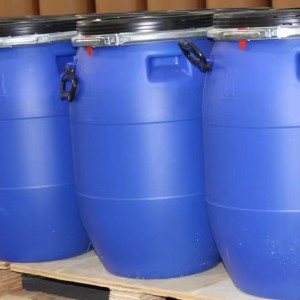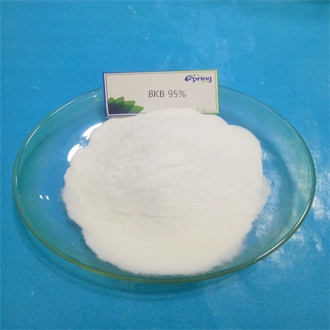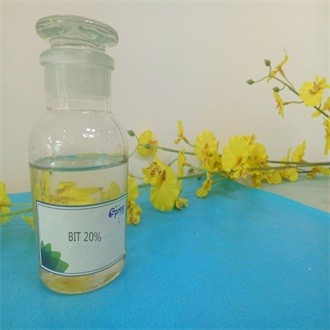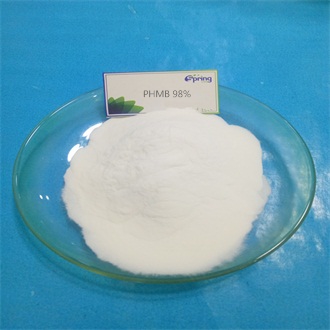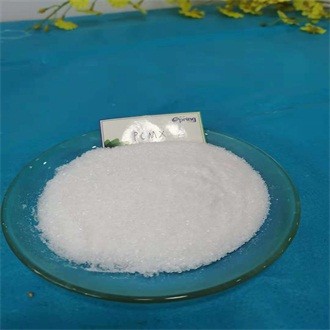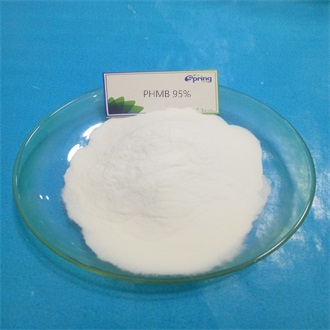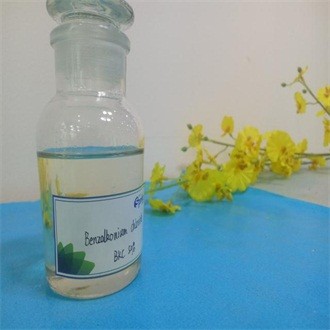Diclosan CAS 3380-30- 1
Chemical name :4,4' -dichloro-2-hydroxydiphenyl ether; Hydroxy dichlorodiphenyl ether
Molecular formula: C12 H8 O2 Cl2
IUPAC name: 5-chloro-2 - (4-chlorophenoxy) phenol
Common name: 5-chloro-2 - (4-chlorophenoxy) phenol; Hydroxydichlorodiphenyl ether
CAS name: 5-chloro-2 (4-chlorophenoxy) phenol
CAS-No. 3380-30- 1
EC Number: 429-290-0
Molecular weight: 255 g/mol
Appearance: Liquid product composition 30%w/w Dissolved in 1,2 propylene glycol 4.4 '-dichloro2 -hydroxydiphenyl ether is a slightly viscous, colorless to brown liquid. (The raw material solid is white, white like flake crystal.)
Shelf life: Dichlosan has a shelf life of at least 2 years in its original packaging.
Features: The following table lists some of the physical features. These are typical values and not all values are regularly monitored. Does not necessarily form part of the product specification. The solution states are as follows:
|
Liquid dichlosan |
Unit |
Value |
|
Physical form |
|
liquid |
|
Viscosity at 25°C |
Megapascal second |
<250 |
|
Density (25°C |
|
1.070– 1.170 |
|
(hydrostatic weighing) |
|
|
|
Uv absorption (1% dilution, 1 cm) |
|
53.3–56.7 |
|
Solubility: |
||
|
Solubility in solvents |
||
|
Isopropyl alcohol |
|
>50% |
|
Ethyl alcohol |
|
>50% |
|
Dimethyl phthalate |
|
>50% |
|
Glycerin |
|
>50% |
Chemicals Technical Data Sheet
|
Propylene glycol |
>50% |
|
Dipropylene glycol |
>50% |
|
Hexanediol |
>50% |
|
Ethylene glycol n-butyl ether |
>50% |
|
Mineral oil |
24% |
|
Petroleum |
5% |
| Solubility in 10% surfactant solution | |
|
Coconut glycoside |
6.0% |
|
Lauramine oxide |
6.0% |
|
Sodium dodecyl benzene sulfonate |
2.0% |
|
Sodium lauryl 2 sulfate |
6.5% |
|
Sodium dodecyl sulfate |
8.0% |
Minimum inhibition concentration (ppm) for antimicrobial properties (AGAR incorporation method)
Gram-positive bacteria
| Bacillus subtilis black variant ATCC 9372 |
10 |
| Bacillus cereus ATCC 11778 |
25 |
| Corynebacterium sicca ATCC 373 |
20 |
| Enterococcus hirae ATCC 10541 |
25 |
| Enterococcus faecalis ATCC 51299 (Vancomycin resistant) |
50 |
| Staphylococcus aureus ATCC 9144 |
0.2 |
| Staphylococcus aureus ATCC 25923 |
0.1 |
| Staphylococcus aureus NCTC 11940 (Methicillin-resistant) |
0.1 |
| Staphylococcus aureus NCTC 12232 (Methicillin-resistant) |
0.1 |
| Staphylococcus aureus NCTC 10703 (Nrifampicin) |
0.1 |
| Staphylococcus epidermidis ATCC 12228 |
0.2 |
| Gram-negative bacteria | |
| E. coli, NCTC 8196 |
0.07 |
| E. coli ATCC 8739 |
2.0 |
| E. Coli O156 (EHEC) |
1.5 |
| Enterobacter cloacae ATCC 13047 |
1.0 |
| Enterobacter gergoviae ATCC 33028 |
20 |
| Oxytocin Klebsiella DSM 30106 |
2.5 |
| Klebsiella pneumoniae ATCC 4352 |
0.07 |
| Listeria monocytogenes DSM 20600 |
12.5 |
|
2.5 |
|
| Proteus mirabilis ATCC 14153 | |
| Proteus vulgaris ATCC 13315 |
0.2 |
Instructions:
Since dichlosan has a low solubility in water, it should be dissolved in concentrated surfactants under heating conditions if necessary. Avoid exposure to temperatures >150°C. Therefore, it is recommended to add washing powder after drying in the spray tower.
Dichlosan is unstable in formulations containing TAED reactive oxygen bleach. Equipment cleaning instructions:
Equipment used to formulate diclosan-containing products can be easily cleaned using concentrated surfactants and then rinsed with hot water to avoid DCPP precipitation.
Dichlosan is marketed as a biocidal active substance. Security:
Based on our experience over the years and other information available to us, diclosan does not cause harmful health effects as long as it is used properly, due attention is paid to the precautions required to handle the chemical, and the information and recommendations provided in our safety data sheets are followed.
Application:
It can be used as antibacterial and antiseptic in the fields of curative personal care products or cosmetics.Buccal disinfectant products.



